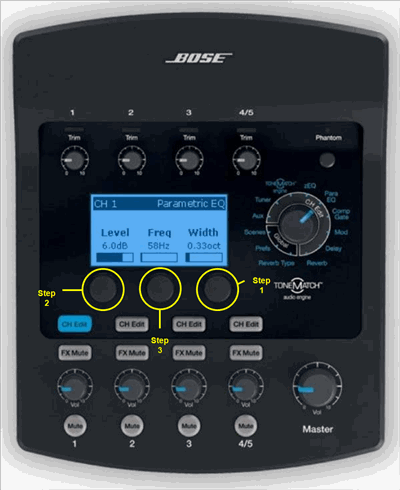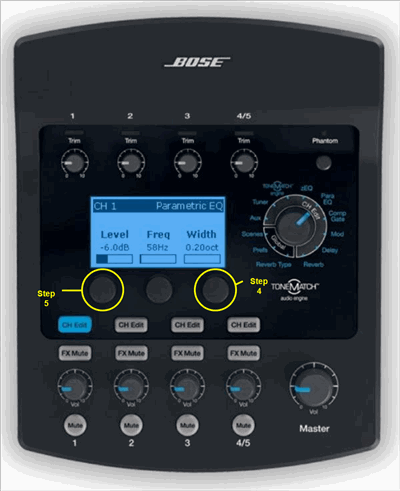Parametric EQ / Solving Problems
Contents
Using Para EQ to solve a problem frequency
You can use the T1 ToneMatch Audio Engine Parametric EQ feature to notch out a problem frequency. Here are a few real-world examples.
Bassist With Excessive Resonance at B flat
Chuck-at-Bose provided this approach.[1]
|
|
|
4. Adjust the Width control to as narrow a value as possible, so that only the problem is being affected, leaving the non-offending frequencies around it unchanged. The T1 goes down to one fifth (0.20) of an octave, which is great for 'notching out' problem notes. |
Another Approach to Eliminating a Boomy Note
Hilmar-at-Bose had a different approach[2]
a) set the level of the para EQ to a cut, say -10 dB
b) set the width to fairly narrow, say .25 octaves
c) start with a rough estimate of the offending frequency and then move the frequency around until the offending note gets tamed best
d) you can press on the level control to toggle between on and off which gives you a direct A/B so you can judge the effect better
Once you have centered on the frequency you adjust the level and width to taste.
Estimating the frequency:
- Low octave of the bass is from 40 Hz to 80 Hz (E1 to E2), A1 is at 55 Hz
- Low octave on the guitar is from 80 Hz to 160 Hz (E2 to E3), A2 is at 110 Hz
- 2nd octave on the guitar is from 160 Hz to 320 Hz (E3 to E4), A3 is at 220 Hz
Here is a cheat sheet: Frequency vs. Musical Notes Graphic from MIT
Controlling Vocal Microphone Feedback
Feedback/T1 ToneMatch™ Audio Engine


